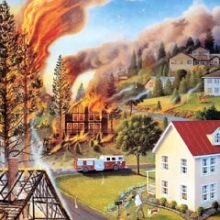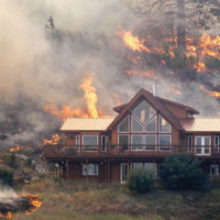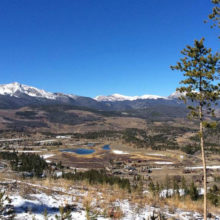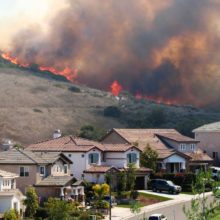- A rating system could be created to disperse land use planning assistance to communities.
- Mapping wildfire hazard is a necessary first step for local land use planning to reduce wildfire risks and costs.
- Passing some wildfire costs to local governments would create a strong incentive for planning–and improved decisions that alter the pace, scale, and pattern of home development.
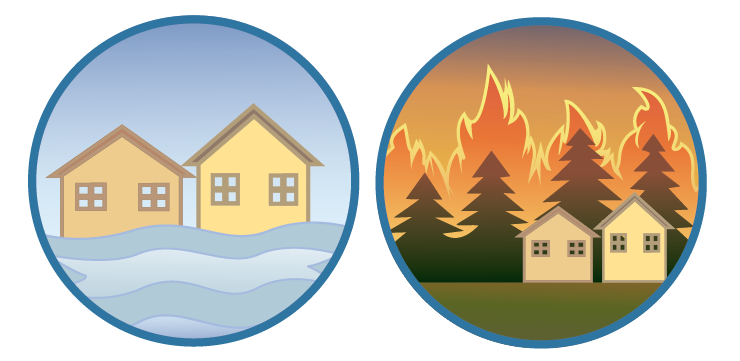
This paper reviews the experience, both positive and negative, of national floodplain management programs to draw lessons for new approaches to reduce the costs and risks posed by wildfire to properties in the Wildland-Urban Interface (WUI). It is part of our ongoing wildfire research.
During the past several decades, federal flood efforts switched from emphasizing structure protection to encouraging reduced exposure to flooding and promoting financial protection for victims. To help stem the trend of ever-increasing wildfire losses, federal efforts similarly should place a greater emphasis on mitigating wildfire risk before it occurs–through improved building and land use decisions that alter the pace, scale, and pattern of home development on the as-yet undeveloped portion of the WUI.
To produce the report we worked with Carolyn Kousky, Ph.D., who is with Resources for the Future and a leading expert on federal flood management programs.
Background
During the past few decades wildfire risks have increased dramatically: doubling the acres burned per fire, tripling the number of structures burned, and quadrupling firefighter fatalities. As a result, the Forest Service and Bureau of Land Management now spend an average of $3 billion per year; triple the amount from a decade ago.
Homes are a major driver of firefighting risks and costs. At least one-third of suppression expenses go to defend private homes, and some put the estimate higher, at 50 to 95 percent. Looking forward, in the West 84 percent of the WUI, the forested areas where housing borders undeveloped lands, is not yet developed, representing significant potential future risks and expenses.
Efforts to date largely have focused on the voluntary adoption of fire-resistant building materials and landscaping, as well fuels reduction efforts. Both are important steps, but likely insufficient—particularly at current levels—to curb the escalating risks and costs of wildfires.
Three Summary Findings
Our paper details 14 specific lessons, grouped here into three broad categories:
First, mapping fire risks is a necessary first step for managing risk. The federal government and some states have started producing and sharing fire-risk maps to better understand the extent of the problem. Such maps already are an element of Community Wildfire Protection Plans and are used in some states, but are not widely available or consistent across jurisdictions. Improving these risk-maps should be prioritized.
Second, the federal government should incentivize the adoption of risk reduction measures. This can be done by tying suppression dollars and disaster aid to minimum mitigation requirements or a rating program to reward communities that reduce wildfire risk. A bundle of incentives—such as higher levels of financial and technical planning assistance, and, where appropriate, funds for land purchases—would be given preferentially to higher ranking communities. A separate program could help fund community wildfire mitigation, as has been the case for floods.
Third, the federal government must pass some wildfire costs on to local governments. Incentives, while important, by themselves have a limited ability to reduce building in high-risk areas or encourage the adoption of cost-effective measures. Currently, federal dollars for reconstruction post-disaster, and for combating disasters as they unfold, create a moral hazard problem where local governments receive the benefits of allowing development in high-risk areas, but pay few of the costs of those actions. Requiring local governments to pay more disaster costs may induce them to invest more heavily in risk reduction.
